
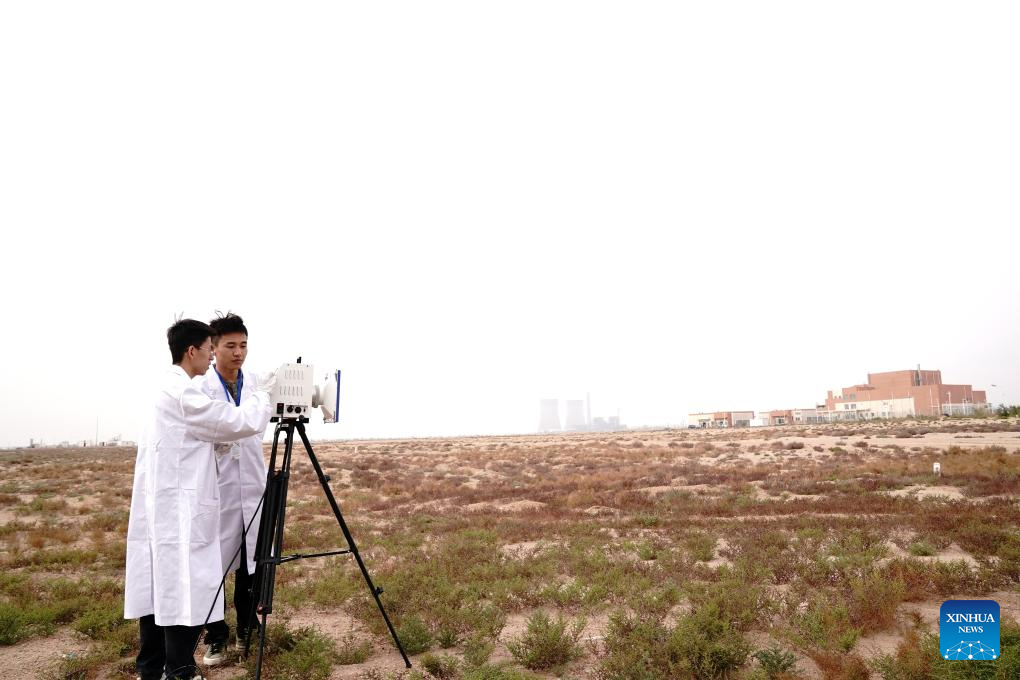
Researchers conduct aerosol sampling at the Wuwei campus of the Chinese Academy of Sciences' Shanghai Institute of Applied Physics (SINAP) in Minqin County of Wuwei City, northwest China's Gansu Province, Oct. 24, 2025. (Xinhua/Zhang Jiansong)
China has successfully achieved the first-ever thorium to uranium nuclear fuel conversion in a Thorium Molten Salt Reactor (TMSR), and obtained valid experimental data following thorium fuel loading, confirming the technical feasibility of thorium utilization in a molten-salt reactor nuclear energy system, according to the Chinese Academy of Sciences' Shanghai Institute of Applied Physics (SINAP) on Saturday.
The experimental TMSR, which was built by SINAP in collaboration with other Chinese institutions, is currently the only operational molten-salt reactor in the world loaded with thorium fuel. The realization of thorium-uranium conversion marks a milestone in TMSR development, providing core technical support and a feasible solution for China's large-scale development and utilization of thorium resources, and for the future progress of advanced nuclear energy systems.
Molten-salt reactors are fourth-generation advanced nuclear energy systems that use high-temperature molten salt as a coolant. They boast inherent safety features, cool without water, run at atmospheric pressure, and deliver a high-temperature output. These features mean the reactors are widely recognized as the most suitable type for thorium resource utilization in nuclear energy production.
This technological route aligns particularly well with China's abundant thorium reserves. It also allows for deep integration with industries such as solar power, wind power, high-temperature molten-salt energy storage, high-temperature hydrogen production, coal chemical engineering and petrochemical engineering, facilitating the construction of a complementary, low-carbon, integrated energy system.
According to SINAP, the TMSR program was launched in 2011, achieving major progress from laboratory research to the engineering verification of core materials, equipment and technologies. With domestically developed core equipment and an independent supply chain, China has established complete TMSR technology and industrial chains in basic terms.
SINAP said that it will work with leading energy companies to consolidate the TMSR industrial and supply chains, and accelerate technology iteration and engineering application. The ultimate goal is to construct a 100-megawatt demonstration project and realize its demonstration application by 2035. (Xinhua)

Researchers conduct environmental monitoring at the Wuwei campus of the Chinese Academy of Sciences' Shanghai Institute of Applied Physics (SINAP) in Minqin County of Wuwei City, northwest China's Gansu Province, Oct. 24, 2025. (Xinhua/Jin Liwang)
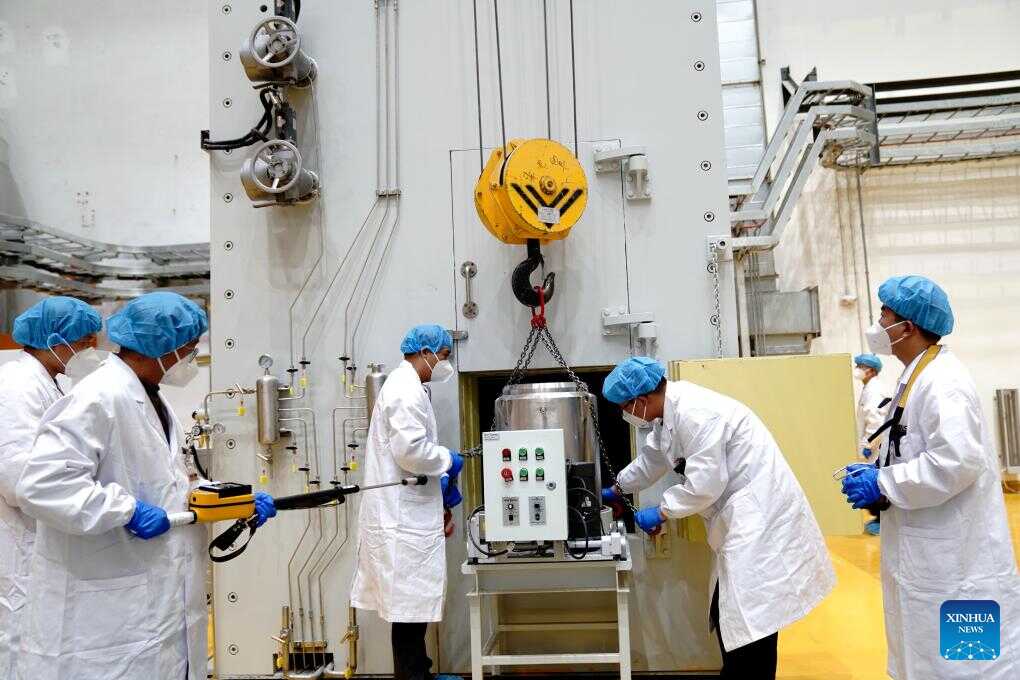
Researchers take out fuel salt samples at the Wuwei campus of the Chinese Academy of Sciences' Shanghai Institute of Applied Physics (SINAP) in Minqin County of Wuwei City, northwest China's Gansu Province, Oct. 24, 2025. (Xinhua/Zhang Jiansong)
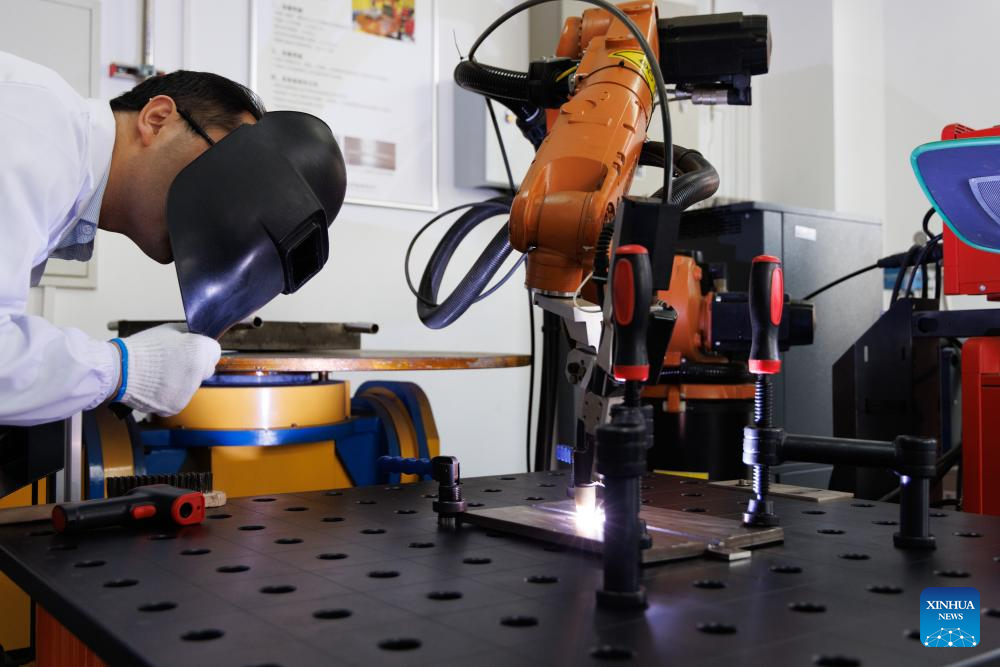
A researcher observes the welding progress of alloy materials used in building the Thorium Molten Salt Reactor, at a laboratory of Jiading campus of the Chinese Academy of Sciences' Shanghai Institute of Applied Physics (SINAP) in east China's Shanghai, Oct. 23, 2025. (Xinhua/Jin Liwang)

Researchers work in the control room of the experimental Thorium Molten Salt Reactor (TMSR) at the Wuwei campus of the Chinese Academy of Sciences' Shanghai Institute of Applied Physics (SINAP) in Minqin County of Wuwei City, northwest China's Gansu Province, Oct. 24, 2025. (Xinhua/Jin Liwang)

An aerial drone photo taken on Oct. 24, 2025 shows a view of the Wuwei campus of the Chinese Academy of Sciences' Shanghai Institute of Applied Physics (SINAP) in Minqin County of Wuwei City, northwest China's Gansu Province. (Xinhua/Jin Liwang)
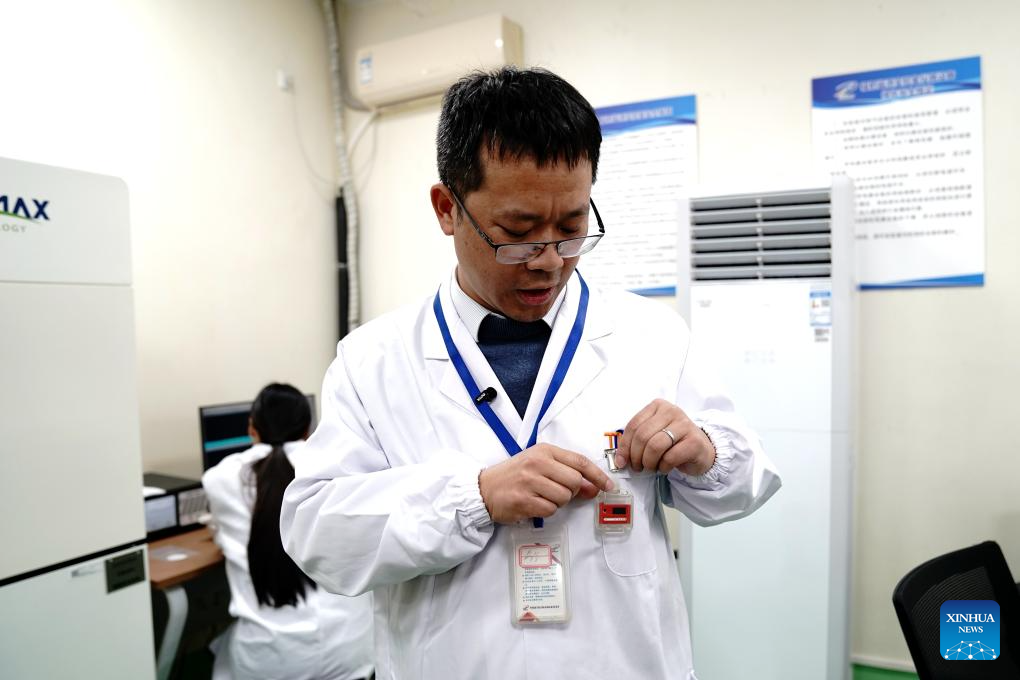
A staff member puts on a device which can measure the radiation level to ensure personal safety at the Wuwei campus of the Chinese Academy of Sciences' Shanghai Institute of Applied Physics (SINAP) in Minqin County of Wuwei City, northwest China's Gansu Province, Oct. 24, 2025. (Xinhua/Zhang Jiansong)

Staff members discuss follow-up constructions at the Wuwei campus of the Chinese Academy of Sciences' Shanghai Institute of Applied Physics (SINAP) in Minqin County of Wuwei City, northwest China's Gansu Province, Oct. 24, 2025. (Xinhua/Zhang Jiansong)
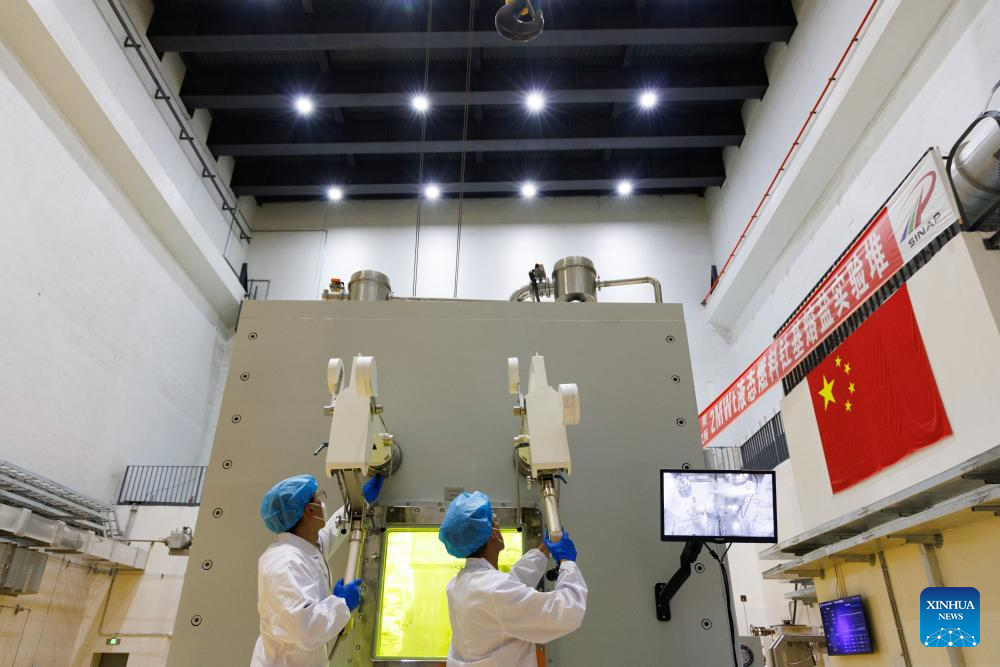
Researchers use mechanical arms to remove fuel salt samples at the Wuwei campus of the Chinese Academy of Sciences' Shanghai Institute of Applied Physics (SINAP) in Minqin County of Wuwei City, northwest China's Gansu Province, Oct. 24, 2025. (Xinhua/Jin Liwang)

Researchers set an alloy material sample used in building the Thorium Molten Salt Reactor, at a laboratory of the Jiading campus of the Chinese Academy of Sciences' Shanghai Institute of Applied Physics (SINAP) in east China's Shanghai, Oct. 23, 2025. (Xinhua/Jin Liwang)
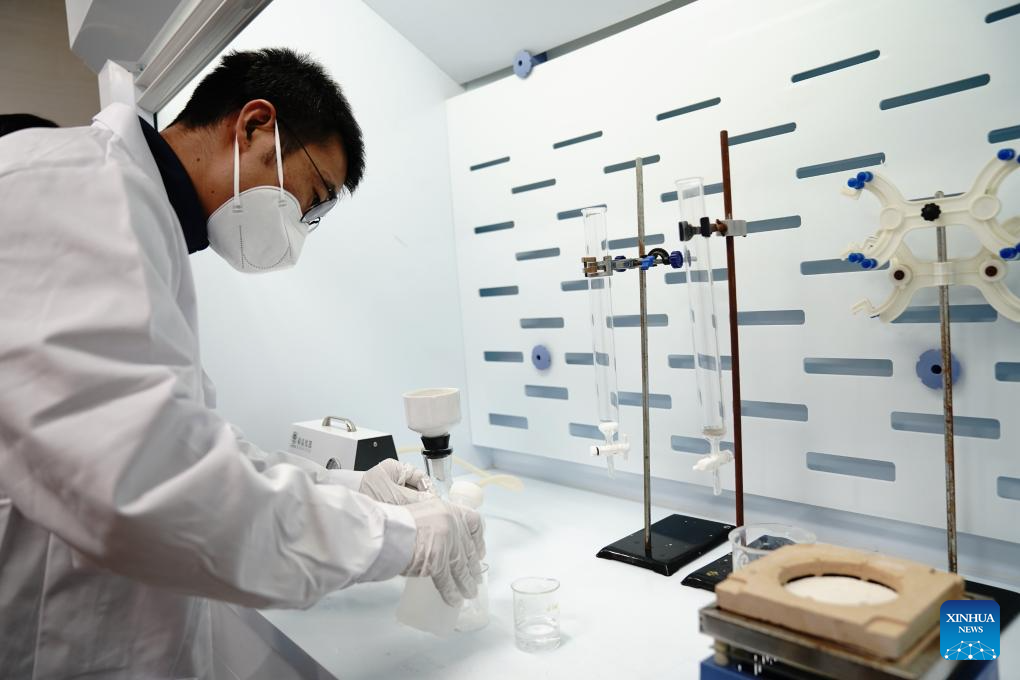
A researcher works in the radiation monitoring laboratory at the Wuwei campus of the Chinese Academy of Sciences' Shanghai Institute of Applied Physics (SINAP) in Minqin County of Wuwei City, northwest China's Gansu Province, Oct. 24, 2025. (Xinhua/Zhang Jiansong)

This photo shows key components of the fuel for the experimental Thorium Molten Salt Reactor (TMSR) displayed at the Wuwei campus of the Chinese Academy of Sciences' Shanghai Institute of Applied Physics (SINAP) in Minqin County of Wuwei City, northwest China's Gansu Province, Oct. 24, 2025. (Xinhua/Zhang Jiansong)
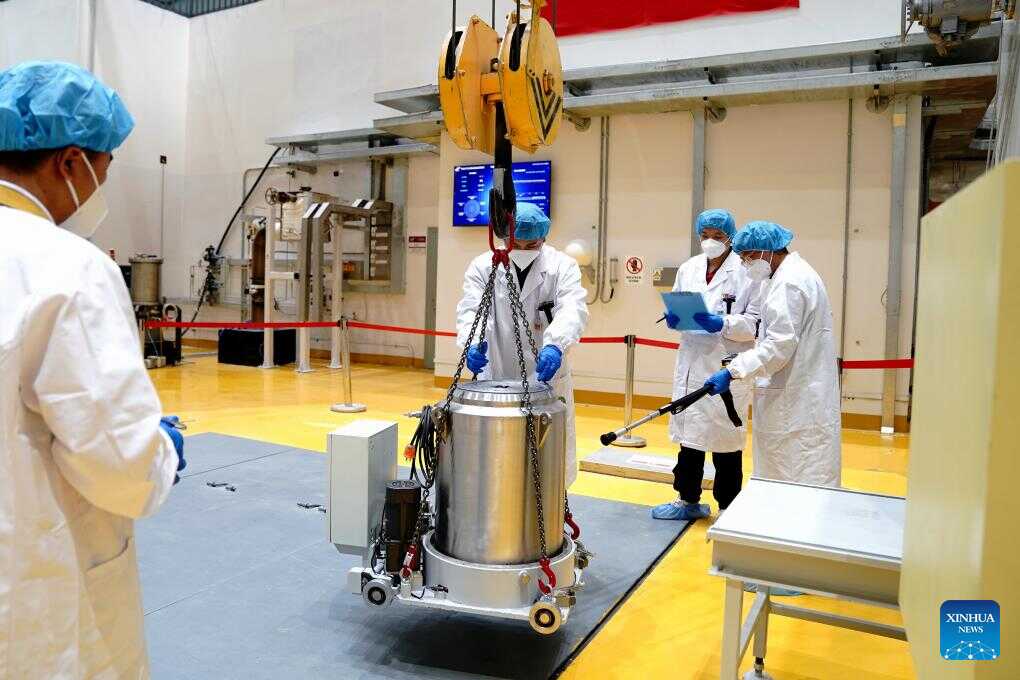
Researchers transport fuel salt samples at the Wuwei campus of the Chinese Academy of Sciences' Shanghai Institute of Applied Physics (SINAP) in Minqin County of Wuwei City, northwest China's Gansu Province, Oct. 24, 2025. (Xinhua/Zhang Jiansong)
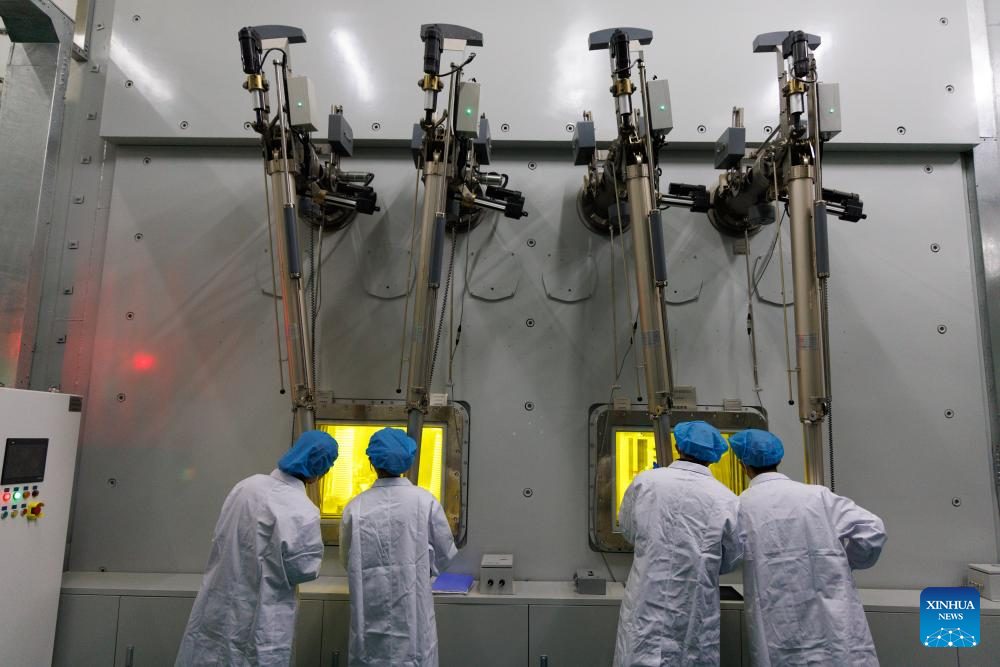
Researchers use mechanical arms to analyse fuel salt samples at the Wuwei campus of the Chinese Academy of Sciences' Shanghai Institute of Applied Physics (SINAP) in Minqin County of Wuwei City, northwest China's Gansu Province, Oct. 24, 2025. (Xinhua/Jin Liwang)
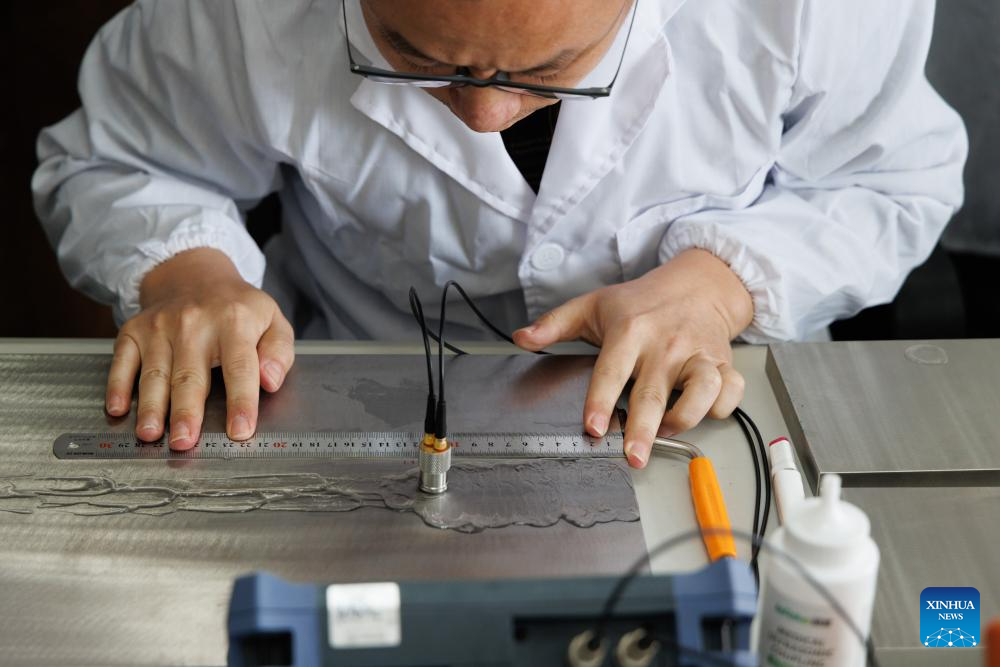
A researcher checks the welding quality of alloy materials used in building the Thorium Molten Salt Reactor, at a laboratory of the Jiading campus of the Chinese Academy of Sciences' Shanghai Institute of Applied Physics (SINAP) in east China's Shanghai, Oct. 23, 2025. (Xinhua/Jin Liwang)

A staff member introduces a device which can measure the radiation level to ensure personal safety at the Wuwei campus of the Chinese Academy of Sciences' Shanghai Institute of Applied Physics (SINAP) in Minqin County of Wuwei City, northwest China's Gansu Province, Oct. 24, 2025. (Xinhua/Zhang Jiansong)
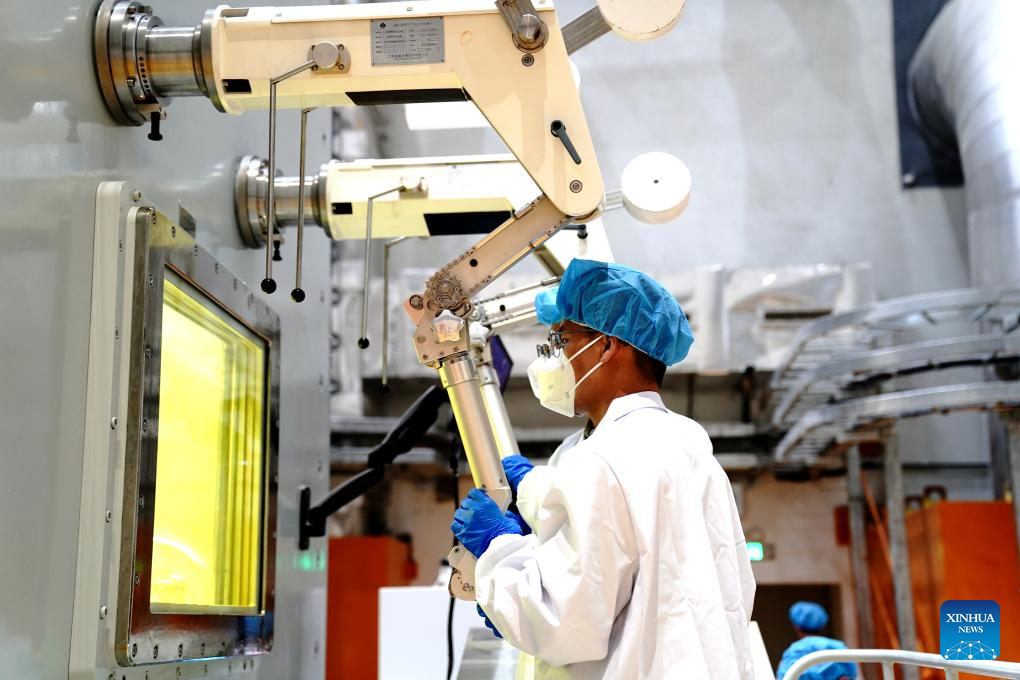
A researcher works at the charging-sampling hot cell of the experimental Thorium Molten Salt Reactor (TMSR) at the Wuwei campus of the Chinese Academy of Sciences' Shanghai Institute of Applied Physics (SINAP) in Minqin County of Wuwei City, northwest China's Gansu Province, Oct. 24, 2025. (Xinhua/Zhang Jiansong)

86-10-68597521 (day)
86-10-68597289 (night)

52 Sanlihe Rd., Xicheng District,
Beijing, China (100864)

